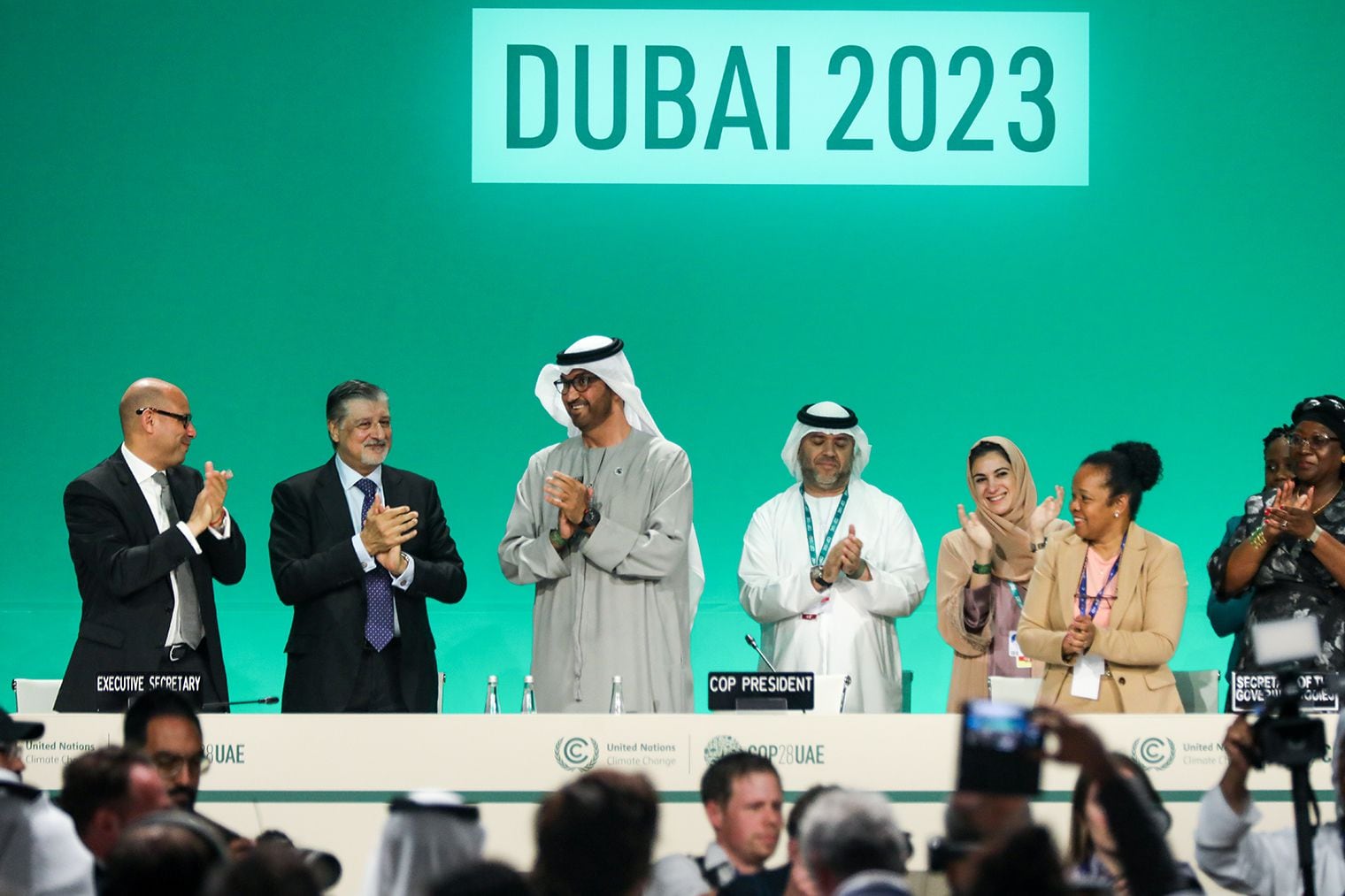
Last week, Vogue Arabia ran an editorial featuring climate activist Sophia Kianni drenched in slick, black slime. The strapline: “We are literally wearing oil.”
The campaign aimed to raise awareness of the fashion industry’s deep reliance on fossil fuels, whose future has been the central point of debate at this year’s UN COP climate summit.
The annual gathering of world leaders, executives and activists, which concluded Wednesday with a deal to transition away from oil, gas and coal, was especially fraught this year. It took place against the backdrop of a worsening climate crisis, and the decision by host nation the UAE to appoint the head of its state oil company the summit’s president enraged climate campaigners.
Negotiations aimed at moving the world closer to delivering on climate ambitions nearly fell apart this week after an early draft removed any mention of phasing out fossil fuels. The final agreement, concluded after an all-night marathon of discussions that stretched beyond the summit’s official end date, is still softer than many countries wanted.
Behind the diplomatic intrigue is the uncomfortable reality that countries and companies are still moving far too slowly to deliver on their climate commitments. Big brands in the fashion industry are off track on their targets to cut planet-warming emissions by 2030, according to an analysis by advocacy group Stand.earth published last week. In fact, the sector’s emissions are forecast to rise 45 percent by the end of the decade. They need to half.
Shifting that paradigm will require huge amounts of money, closer collaboration within the industry, as well as across other sectors, and deft navigation of the messy and conflicting political and economic interests that have made simply reaching a climate deal on paper so challenging.
And while the industry isn’t alone in facing such challenges, it’s not a space fashion is used to playing in. Instead it’s been chronically under-regulated and avoided accountability for its environmental footprint by outsourcing the nastier parts of its business to poorer countries far from its core consumers.
“Fashion has managed to shimmy along the back wall when it comes to [recognition of its] climate impact,” Samata Pattinson, CEO of cultural sustainability firm Black Pearl, told a session at COP last week.
It’s still a footnote in the broader climate conversation, despite growing regulatory scrutiny led by the European Union and efforts by advocacy groups to move it up the agenda. Many brands have yet to lay out a strategy for meeting their sustainability commitments while facing a murky economic outlook. And it’s unclear how the industry plans to navigate the sensitive topic of financing a costly transition away from fossil fuels that is unlikely to generate returns, but will require brands to help pay to clean up emissions that take place deep in their supply chains. (One of the central achievements of this year’s COP was an agreement on a fund to help developing countries deal with climate change).
There’s little expectation consumers will help foot the bill, either. “For a while we all thought there was a green premium out there that would help this transition,” Ganni founder Nicolaj Reffstrup said during a panel at COP on Monday. “But there isn’t, and if there was, it’s evaporated over the last few years.”
Smart regulation that levels the playing field and incentivises more responsible business practices can help accelerate action. But creative financial solutions and new business models are needed as well. Some brands are beginning to dabble with bigger investments — Bestseller and H&M Group pledged $100 million to support a prospective wind project off the coast of Bangladesh last week. But such financial experiments remain few and far between — a drop in the bucket compared to the scale of the challenge.
Ultimately figuring out these challenges will require new ways of working, much greater policy engagement than the industry has been used to and a broad tent.
“A lot [of those] in the fashion industry talk to each other, talk around each other. I would like to see more of us talking with each other to co-create the solutions we need to decarbonise the industry,” Matthew Guenther, director of environmental sustainability at manufacturing giant Tal Apparel and chair of the steering committee for the UN Fashion Industry Charter for Climate Action, said at COP. “Let’s bring the policymakers in, let’s bring the financial institutions in, let’s bring in the NGOs with their knowledge of on-the-ground sentiment.”



